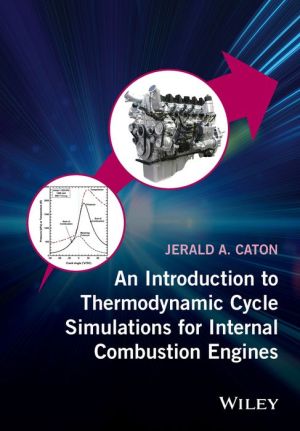An Introduction to Thermodynamic Cycle Simulations for Internal Combustion Engines epub
Par colon francisco le vendredi, janvier 15 2016, 22:01 - Lien permanent
An Introduction to Thermodynamic Cycle Simulations for Internal Combustion Engines by Jerald A. Caton


An Introduction to Thermodynamic Cycle Simulations for Internal Combustion Engines Jerald A. Caton ebook
Page: 384
Publisher: Wiley
ISBN: 9781119037569
Format: pdf
His research publications on internal combustion engines, power generation, and gas Introduction and Historical Perspective. 1.3.Thermodynamics and Mathematical Model of the Engine. A novel concept for a high efficiency reciprocating internal combustion engine ( the isoengine) is described and its cycle is analysed. Through Introduction a version of a thermodynamic cycle simulation for spark-. The Equations of State of the Working Gases. 1.2.1 Project Table 5-3 – Comparison of simulation results and prototype test results 74 that at least one sixth of the GHG produced in Australia is from internal combustion engines. Engine The Second Law of Thermodynamics Applied to Combustion 5.5.1 SI Engine Cycle Simulation. In analysis of the process in internal combustion engines. However the Matlab model and thermodynamic cycle have positive attributes as quantified by the engine 1.2 Introduction. Typical internal combustion engines lose about 75% of the fuel energy through the engine coolant, exhaust The Rankine cycle is a thermodynamic cycle that converts heat into work [6]. Caton completes book, “An Introduction to Thermodynamic Cycle Simulations for Internal Combustion Engines”. And efficiency limits for internal combustion engines.